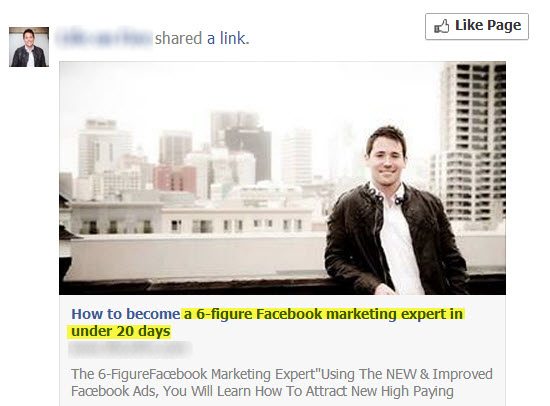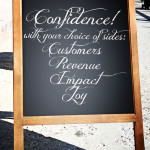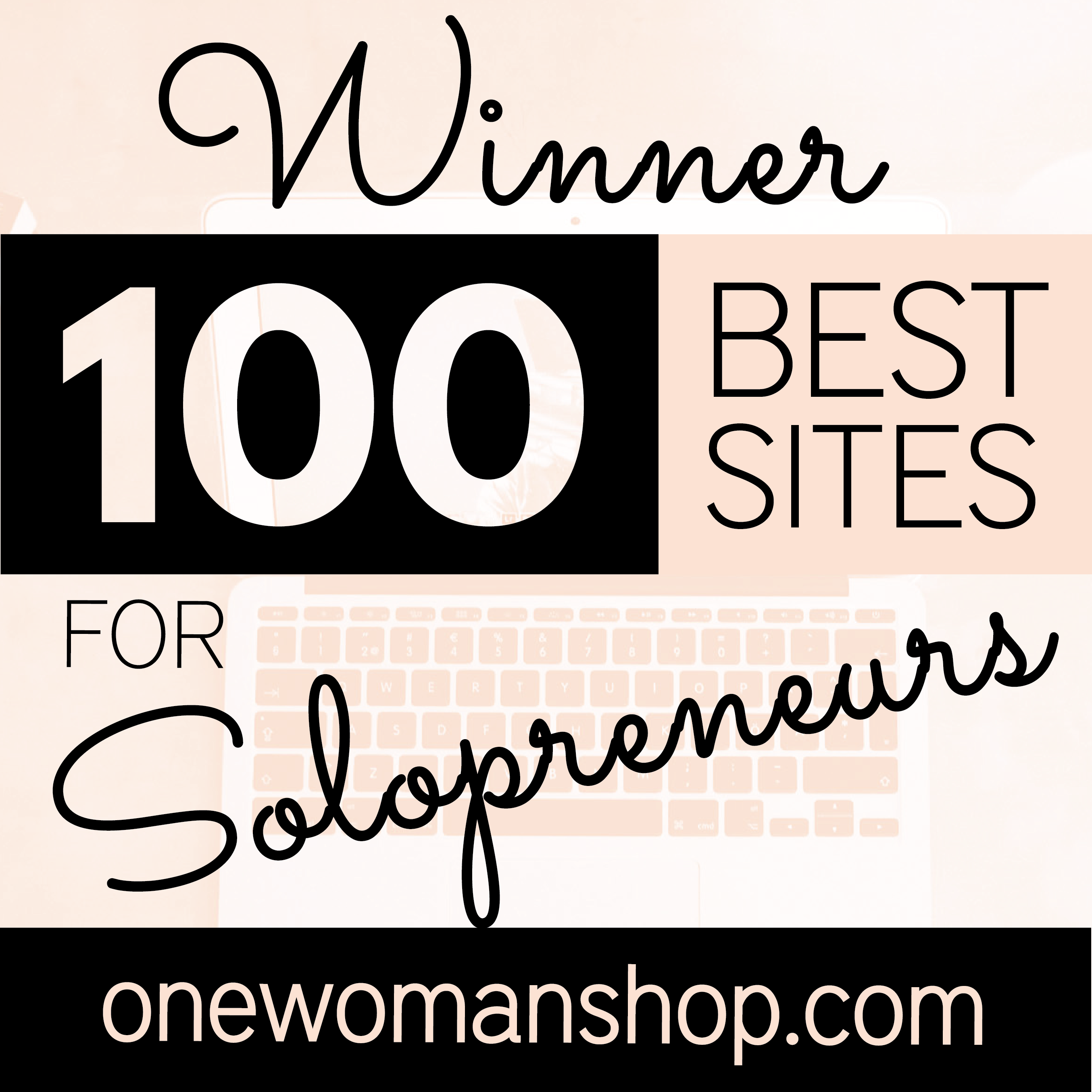Just for a moment, close your eyes and picture the dining room in your home.
What kind of table do you have? What wood is it made from? How many chairs will fit around it (comfortably)?
Visualize that table set for a dinner party. Choose the Placemats. Dishes. Silverware. Napkins. What kind of decor did you go with? Is it casual? Or formal? Was there a theme?
Now imagine your guests arrive, one or two at a time. You open your door and welcome them in.
They each take their seat at the table and you begin to serve the meal.
Over the next two to three hours, you get the chance to spend quality time with all your guests.
What kinds of conversations do you have? Are they deep and meaningful? Are you sharing stories?
Now let’s imagine a dining hall.
The room is vast and the ceilings are tall. There are rows and rows of tables and chairs.
Go ahead and decorate them. You’ve got loads of help, of course. Lots of staff to carry out your orders. What kind of room do you create?
Is it fancy-shmancy? Or more like a winter lodge? What kind of food will you have? Entertainment?
And how many quality conversations will you be able to have with your guests? How many stories will you have time to listen to?
My preference is for the smaller party — the one I host in my dining room.
It’s not necessarily superior to a dining hall. It’s just a better fit for me.
See, I crave deeper, more meaningful relationships and quality time with my guests. With my clients, too.
This idea to focus on filling a smaller space first is something that Tara Gentile calls “The Livingroom Strategy,” a valid option to the “Stadium Strategy” business model.
Whatever we decide to call this concept (it certainly isn’t new), we don’t give it nearly enough attention.
In fact, I tried to Google “Why you don’t need a big list to grow your business,” and got nothing but results on…(wait for it)…How to grow a big honkin’ list.
And here’s why: the folks who glorify MORE (e.g., your traditional Internet Marketers), are spending scads of precious time and money to convince you that bigger is better.
They have no compunction about seeing you as simply part of their larger cash machine.
They’re huge promoters of the idea that you must must must think BIG. Especially if you ever hope to create a “6 or 7-figure” income.
You hear things like, Grow a ginormous mailing list. Attract thousands of Facebook fans. And, “crush it” with a landslide of daily traffic to your website. (Sound familiar?)
Truth: You don’t need that many clients to make a really good living.
Even if you decide to leverage yourself by creating a fabulous 1-to-many program, you probably only need about three, maybe four dozen clients in a given year.
It depends, of course, on the kind of projects you do, but if you crunch the numbers, I’m pretty sure you’ll agree.
So why do you still beat yourself up over the size of your mailing list?
Why are you buying programs that teach you how to fill a stadium or dining hall when you really only need to fill a dining room? At least right now?

This kind of thing *might* work for some people, but is it really how you want to build your business?
The Mindful Way to Grow Your Business
Ask yourself the following questions to see if your marketing and business ideas are aligned with who you want to be and what you want to create in the world.
Do You Believe in an Abundant Universe?
At the heart of the world’s short-term focus is a fundamental belief that there’s Not Enough.
Not enough jobs. Not enough money. Not enough time.
Not enough connections to the right people.
Not enough knowledge or experience or options.
There’s a pervasive feeling that there’s an answer somewhere OUT THERE (instead of IN HERE), and that’s really why we keep downloading all those free PDFs.
The next time you get the urge to take one of those programs or download a free PDF, make sure you ask yourself if that urge springs from a valid place inside you.
If it doesn’t, you’ve got full permission to walk away.
Have You Put the Cart Before the Horse?
It’s also important to take the time to figure out your core platform or branding message before you invest hundreds or thousands of dollars on tools or marketing materials.
Understand that finding your voice takes time. It’s like making soup — sometimes you just need to let things simmer for a while in order to figure out what you’re really all about.
Know — really know — that blueprints, roadmaps and recipes can only get you so far. To find true, long-term success, you’ll have to experiment and play with the ingredients in your business kitchen.
Be okay being an apprentice for a time. Be okay with learning the ropes and not needing to be ‘discovered’ and famous tomorrow.
Put some basic systems in place so that when more people arrive at your door (and they will), you’ll be prepared to greet them.
Don’t rush to write your book, start your podcast or create your products. Slow down a bit so you can focus on crafting what you do to make it even better (so that it really helps people).
Have You Created Meaningful Relationships With Your Existing Connections?
It takes a while to build trust with people we’ve just met. And to discover who they really are.
Spend some focused energy ensuring your existing connections are solid before you attempt to pile on more. You might find you’re already friends with exactly the right number and kinds of folks.
Are You Working With the Right Clients? And Are You the Right Person for Them?
Instead of pressuring people to buy right now, encourage them to sleep on it and sit with it to make sure it’s really a fit for them.
It’s crucial to acknowledge and honor each potential client’s unique right timing to work with us (or not).
It means we slow down our conversations with potential clients and really listen. Instead of pushing, we lean back. Instead of starting to give advice, we get more curious about their situation. Instead of skipping over a challenge, we go deeply into exploring it.
Take time to figure out what kinds of clients are actually a perfect fit for you, too.
Remember that, in terms of relationships with clients, forever matters more than today.
Are You Enjoying the Process?
It’s not enough to just accept that you sometimes need to slow down. You also want to enjoy it. To relish the present moment.
And make sure that you inject some fun into each and every day. If it’s not fun, we might as well get jobs, right?
Speaking of Jobs…
It might be okay (even wonderful!) for you to have a day job while you build up your business. Even a part-time gig to relieve the money pressures will go a long way toward making the process more enjoyable.
Hustling is not a sustainable space to be in. That doesn’t mean you don’t ever do it. It just means you need to have time and space to relax and listen to your heart.
This is what I like to call Slow Marketing.
And it’s high time we gave this path some serious consideration.
This post is part of the October Word Carnival. Our theme this month is “Jekylls and Hydes: Two-sides of a Coin.” You can read all the other fabulous opinions here.











I’m hoping the glorification of MORE will come to an abrupt halt sometime in the near future, Tea. It’s the kind of crap that makes me cringe. Although cleverly devised, it’s deceptive. And senseless.
I’ve always been an ardent fan of “intimate” so I love your take on filling a dining room versus filling a dining hall. And you’re right about [business] soup … ya gotta let it simmer! Have you ever tried to make a quick soup? The flavors don’t have enough time to blend so you end up with a tasteless meal. The same holds true for homemade spaghetti sauce. My dad was the cook in our house and he used to take the entire day to make his sauce from scratch. I loved the smell wafting through the house as it simmered on the stove for hours. 🙂
Your advice to inject some fun into each and every day is SO important. People tend to take fun lightly, right? And well they should! But from a biz-building standpoint, all work and no play/fun leads to things like burnout and depression. I might go so far as to say some businesses have failed because of the absence of fun.
Story Bistro ROCKS!
Thank you for your enthusiastic support, Melanie. It means the world. The more of us who can stand up for this path, the better our world will be.
Here’s a thing: I find that even when you’re in a dining hall (or at least when I’m in one) you tend to congregate down into smaller dining tables anyway. In big-ass groups it’s impossible to be heard and the big mouths end up competing for all the attention anyway. So I guess somehow I always find the smaller groups where you can actually make a difference.
Here’s another thing: pay attention to the people who you ALREADY have relationships with, as you so rightfully said. It’s so easy to take those for granted (oh, she is already my client – got to run out and get the next one) and then sacrifice opportunities because of it. Instead of running off to the next thing, pay attention to the thing in front of you.
I think everyone tends to think that bigger/better/faster/more is always just on the horizon if we keep chasing it. Success is not in numbers, certainly, but in the quality of what we have.
I so love the idea of slow marketing and small groups, Tea. Building something great takes time and the kind of headspace that you don’t get in large, noisy groups.
I am getting clarity these days as I have been in a fog. You hit me with two things: Figuring out the right clients and enjoying the process. I feel I wasn’t enjoying the process because I did not have all of the right clients. The majority I have had were a pure joy and we are still connected if not working on current projects, but we support each other. I am now clearer on the right clients and understand the need to slow down and be clear to ensure I can “keep” the right clients.
AGREED, Michelle. Tea always has a great way of bringing clarity to any situation, in my experience. I personally am wrestling with the whole “growth for the sake of growth/growth ’cause I actually WANT it” thing right now. This one hits home for me.
A guy crawls into the hospital. The doctor comes over and asks him what’s wrong.
“My leg is broken,” he says. The doctor says, “Well, you’ve got 205 other bones, dude – just use one of those.”
The problem with more is that more doesn’t address the problem of fit – either in terms of context, timing, or proximity. A single large good client can sustain you when a slew of smaller bad clients can drain you ceaselessly.
Most folks can’t use more than two tibias on a daily basis, and if yours breaks, there’s a recovery process. You’ve gotta use the ones you’ve got (for the most part) and they’re somewhat ingrained. Unless you’re Buster from the MythBusters, parts can’t be hotswapped when one breaks.
Clients, when done properly, are a lot the same way. You grow together; small business relationships are a symbiosis when done well. I have had business partners who were amazing at understanding my requests – and I knew exactly how to support them in kind.
When a client gets you, and you get your client, there’s a great synergy (to reappropriate a buzzword). Without that synergy, one tiny mistake becomes a fatal flaw. One missed meeting or one misfiled report become the death knells of thousand-dollar deals. Nobody likes to work, walk, or live on broken glass 24/7.
The fixation with “more” comes from a sales mindset – outside sales is very much a numbers game, you spot the opportunity and if you’re in the right place at the right time with the right words, you land the client. But even that relationship is something that has to be nurtured and grown.
It’s just a different model, a different mindset – hack-and-slash or churn-and-burn businesses reap wads of fast cash, but they burn trust. There’s no long-term profit there. Only pain, sorrow, and a quick trip down the drain while you irrevocably damage the community that took you in.
An intriguing analogy. I think we have all been yearning for the dining room but feeling guilty because we believed we needed to be aspiring to the dining hall. What a waste of energy. It is a relief to read posts like this Tea. We need to be relieved of this senseless aspiration. Thank you.
This is a beautiful way to remind us all to take a collective sigh and catch our breath. A lot of *whatever I’m selling* is not helpful. Taking time to clarify and hone in on how you can help people is likely to be more sustainable and personally rewarding than just being ‘out there’. Thanks for the dining room metaphor…it really provides clarity.
Last year I had one MAJOR client who supplied more than 50% of my income by the end of the year. So I can definitely attest to having a small number of clients but, depending on the project, still being able to support yourself.
The thing that I learned the hard way with this, however, is if that one major client suddenly goes radio silent, and the work dries up, you’re going to be scrambling to gain new leads. I had a rough few months in there while I was trying to figure out how to get more work, and there’s nothing that beats you down more than having to “hit the streets,” so to speak, trying to drum up work because you desperately need the money.
Now I’m older and wiser, and I have a varied—but still fairly small—group of clients who send me regular work, and it’s been a lot less stressful.
It can be difficult to reach that point, and being an entrepreneur is always a bit of a gamble, but keeping it small can work wonders. Who wants a huge email list of people who don’t give a shit about what they’re saying, and will never buy from them? Those numbers really mean nothing.
It’s late on a Friday night and I’m going through my email (inbox zero is just a dream for me!). And I stumble across this gorgeous blog post that I haven’t read. Tea, you write so beautifully and clearly. I’m laying the foundations this year and am all for the smaller groups and slow marketing. Thank you for a great read.